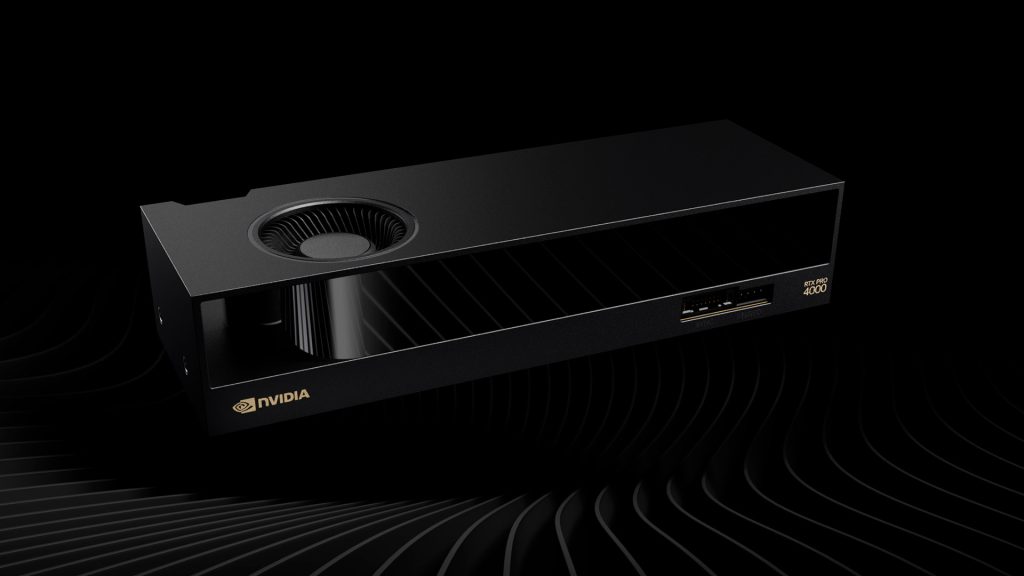Low profile RTX Pro 4000 SFF and RTX Pro 2000 join full height Blackwell boards announced earlier this year.
Nvidia has announced two new low-profile workstation GPUs, the Nvidia RTX Pro 4000 Blackwell SFF Edition and the Nvidia RTX Pro 2000 Blackwell, designed to accelerate a range of professional workloads, including CAD, visualisation, simulation and AI.
Both are expected to appear in small form factor and micro workstations later this year, including the HP Z2 Mini G1i and Lenovo ThinkStation P3 Ultra SFF.
The RTX Pro 4000 SFF and RTX Pro 2000 feature fourth-generation RT Cores and fifth-generation Tensor Cores with lower power in half the size of a traditional GPU.
Compared to its predecessor, the RTX 4000 SFF Ada (read our review), Nvidia claims the RTX Pro 4000 Blackwell SFF delivers up to 2.5× faster AI performance, 1.7× higher ray tracing performance, and 1.5× more bandwidth — all while maintaining the same 70-watt maximum power draw. It also gets a memory boost, increasing from 20 GB of GDDR6 to 24 GB of GDDR7.
Meanwhile, compared to the RTX 2000 Ada (read our review), the RTX Pro 2000 Blackwell is said to deliver up to 1.6× faster 3D modelling, 1.4× faster CAD performance, and 1.6× faster rendering. It also promises a 1.4× improvement in AI image generation and a 2.3× boost in AI text generation. Memory has been increased as well, rising from 16 GB of GDDR6 to 20 GB of GDDR7.

London-based Studio Tim Fu (STF) has been putting the new GPUs to work in its AI-driven design workflows. “The RTX Pro 2000 Blackwell powers our UrbanGPT application for real-time text-to-3D urban design, which can be used to generate dynamic city layouts, track vital metrics like program and floor areas, and produce realistic massing distribution across complex urban design scenarios,” said founder Tim Fu. “From zoning simulations to large-scale massing studies, this technology accelerates our AI-driven design engine with the stability and responsiveness needed for city-scale planning.”
Meanwhile, Thornton Tomasetti, a New York-based engineering and design consulting firm, has been using the new cards for structural analysis. “We benchmarked the RTX Pro 2000 Blackwell on CORE.Matrix — our in-house, GPU-based Finite Element Analysis solver — running almost 3x faster than with the RTX 2000 Ada and 27x faster than with a standard CPU,” said Rob Otani, chief technology officer. “This enabled us to accelerate our structural analysis workflows for more iterative, design-integrated engineering.”






